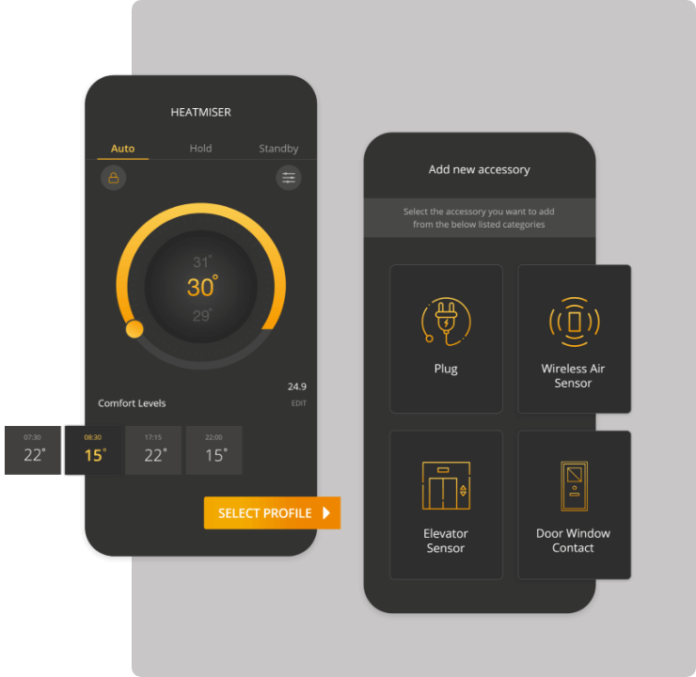Everyone is familiar with the impact of the Internet of Things (IoT)in today’s world. IoT applications are becoming more and more widespread. The solutions provided by IoT app development companies are shaping our lives not only technologically but also economically and socially. According to statics, worldwide expenditure on IoT is expected to be $1B in 2022. Hence there is no better time to invest in this technology than right now. For businesses to integrate IoT technology into their next investment choices, it is essential for them to be aware of its numerous applications. While you might be aware of the usage of IoT in Home Automation, Wearables, and Automobiles. The scope of IoT is certainly not limited to that. So let’s take a look at some unpopular use cases of IoT.
- Retail and supply chain management
The use of IoT devices and apps in retail can go beyond shopping and supply chain management. Restaurants, hotel providers, and other organizations may use it to manage their supply and gain insightful data. For instance, QueueHop technology enables self-checkout for consumers in real-world retail establishments while thwarting theft. The technology expedites checkout and enables store owners to keep track of their inventory in real time.
- Agriculture
When considering the commercial examples of IoT technologies, smart farming is frequently disregarded. However, there are many cutting-edge items for forward-thinking farmers on the market. To keep track of many aspects of nature, like humidity, air temperature, and soil quality, some of them employ a dispersed network of smart sensors. While others employ systems for automating irrigation. One of these Internet of Things (IoT) gadgets is Blossom, a smart irrigation system that calculates your farm’s ideal watering plan based on current weather conditions and projections.
- Logistics
Another possible use for IoT is in the areas of shipping, fleet management, and freight. You can monitor the location, speed, and even the conditions of storage or transit by attaching smart BLE tags to the packages. This is one use for thethings.iO’s cutting-edge IoT platform. A robust cloud-based dashboard and the company’s smart sensors, Cold Chain and Location Trackers, provide trustworthy, real-time temperature and location monitoring for their logistics.
- Healthcare
IoT is significantly influencing the digitization of healthcare, enhancing both clinic operations and patient outcomes. Some of the most striking instances of the application of IoT in the healthcare sector are end-to-end clinical management suites like RTLS by CENTRACK. Smart sensors are placed by RTLS to monitor every area of clinical operations and patient care, including asset management, regulatory compliance, staff satisfaction, and the standard of care provided to patients. Clinics may keep an eye on the condition of medical equipment by gathering real-time data, and by planning prompt repairs they can prevent malfunctions.
- Industrial business
Manufacturing, warehousing, energy, and mining are just a few of the industries that industrial IoT solutions are impacting. The equipment manufacturer named Caterpillar combines IoT and AR to provide workers a thorough understanding of the status of their equipment, from fuel levels to parts that need to be replaced. IoT solutions in the energy industry, like TankClarity, employ sensors to notify businesses when their customers’ oil and gas supplies are running low. IoT solutions like WellAware are being used more often in industrial mining by businesses to monitor the condition of pipelines and mining equipment, prevent interruptions, and guarantee worker safety.
- Smart cities
IoT has what it takes to enhance city people’s experiences and the standard of living in cities. Smart cities all around the world are using IoT more and more to address problems with energy and waste management, traffic and transportation, etc. Digi Remote Manager is one of the platforms that aid in making smart cities more energy-efficient. They also manage wi-fi coverage, electronic billboards, security cameras, and other crucial equipment like environmental sensors and charging stations.
- Smart buildings
IoT is also revolutionizing Real estate; smart buildings are an example of how IoT applications are raising our standard of living to a whole new level. IoT provides measurements that assist in showing the general health of the building and tracks the status of all of its assets. Building managers can assure the best maintenance and arrange quick repairs by keeping an eye on the status of the heating, ventilation, and air conditioning systems. Systems for detecting and managing air quality, like ZATA, are another example of the Internet of Things applications in smart buildings.
- Sports
Nearly everything used by amateurs and pros in the sports industry now has the Internet of Things sensors. Yoga mats from YogiFi, for instance, are loaded with AI-powered sensors that monitor every movement of the athlete. It offers distinctive individualized instruction via IoT software giving an experience of a personal instructor. There are incredibly specialized IoT examples for professional and recreational sports, such as the Wilson Connected Football System, a football with an embedded smart sensor. The system examines spin speeds, spiral efficiency, and other variables to provide you with crucial performance information. The smart ball can assist you in identifying your areas of weakness and skill improvement.
- Pet care
You may utilize a few IoT gadgets to take care of your cats, dogs, and other cherished pets. These IoT solutions take the shape of intelligent wearables like collars, tags, smart feeders, and even interactive webcams. With the help of these gadgets, you may learn more about your pet, monitor its activity and calorie intake, and identify any early signs of unfavorable health changes.
All the mentioned use cases have a lot of potential in the coming days. Businesses should consider investing in this technology by partnering with digital transformation agencies to come up with new solutions.














